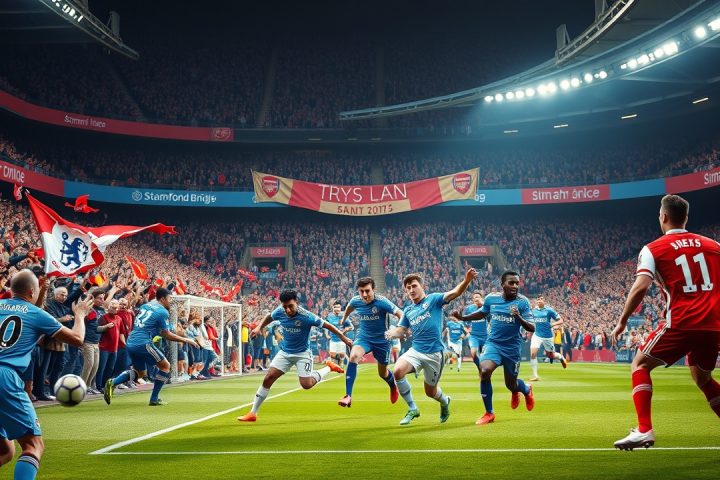VAR’s Impact on Premier League Decisions
In the Premier League, the influence of the Video Assistant Referee (VAR) continues to spark debate, especially following contentious calls each week. After every matchday, we dissect the critical incidents to shed light on how decisions are reached, focusing on VAR procedures and the applicable rules of football. This week’s examination features Brentford’s dramatic equalizer against Chelsea, a disallowed goal for Tottenham Hotspur, and a controversial non-red card for Wolverhampton Wanderers during their match against Newcastle United.
Brentford vs. Chelsea: A Last-Gasp Equalizer
One of the most discussed moments came during Brentford’s last-gasp equalizer against Chelsea. In the third minute of stoppage time, Fábio Carvalho found the net following a flick-on from Kristoffer Ajer after a long throw-in. While the Brentford players celebrated, VAR official James Bell conducted an offside review concerning Dango Ouattara. Ultimately, the goal was allowed to stand, despite Ouattara being slightly ahead of Chelsea defender Reece James when Ajer touched the ball.
It’s important to note that a player cannot be offside from a throw-in; however, once the ball is played, assessments can be made on positioning. The ruling hinged on whether Ouattara’s movement impacted James’s ability to defend, although he did not directly obstruct the defender’s line of sight or touch the ball. The on-field team communicated that they acknowledged Ouattara’s offside position but felt no clear infringement had occurred to overturn the goal.
The discourse surrounding this decision is likely to be divisive. Critics might argue about the definition of impact, indicating that had Ouattara reacted immediately to the ball, there would have been a clearer judgement call.
The VAR’s analysis, although completed in a mere 1 minute and 28 seconds, underscores the subjective nature of such evaluations, as different VAR officials could potentially arrive at varying conclusions based on the same situation. Historical context shows that disallowing a goal in such circumstances, when the offside attacker doesn’t directly impede a defender, is uncommon in the league.
Tottenham’s Disallowed Goal
Moving to a separate controversy, Tottenham was denied what many perceived to be a legitimate goal. Following a corner, Cristian Romero scored with a header, only for referee Jarred Gillett to call a foul against Micky van de Ven for pushing West Ham’s Kyle Walker-Peters. VAR, overseen by John Brooks, supported the referee’s decision. While some argued the call was soft, referencing a sequence of events beginning with a push from Hammers midfielder Mateus Fernandes that led to Walker-Peters stumbling, the ruling stood.
Spurs midfielder James Maddison expressed frustration, suggesting that if such a minor foul warranted a disallowed goal, then future corner kicks may be routinely stalled by the referee’s decisions.
Within the broader context of VAR’s track record, very few goals are upheld after an apparent foul is called on the field — highlighting the rarity with which mistakes have been reversed in the Premier League.
Wolverhampton’s Controversial Red Card
Additionally, Wolverhampton Wanderers faced scrutiny after João Palhinha was challenged by Tomás Soucek, with the referee issuing a red card, which was maintained by VAR due to the severity of the challenge. This incident highlights the ongoing focus on players’ safety and the escalation of punitive measures for violent conduct, reflective of the league’s scrutiny on serious foul play.
Conclusion
These instances illustrate the complexities involved in officiating Premier League matches, particularly under the scrutiny of VAR. The evolving interpretations and decisions have already ignited passionate conversations among fans, players, and analysts alike, suggesting that VAR’s role in the game, while intended to clarify and assist, continues to invite debate and dissatisfaction.




